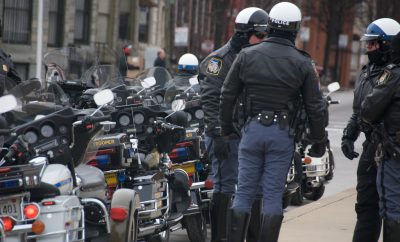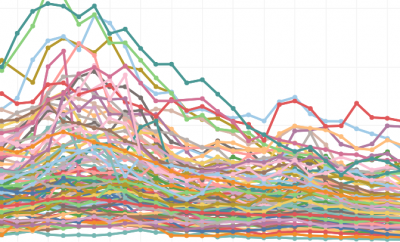
Crime
Crime Drops 20 Percent in St. Louis; Hot-Spot Policing Credited
St. Louis has consistently been ranked one of the most dangerous cities in America over the last several years, yet the latest violent crime statistics indicate that the tide may be turning as a result of many new policing changes. St. Louis is ranked as Law Street’s #3 Most Dangerous City over 200,000; however, the FBI’s latest crime statistics indicate that total violent crime in St. Louis decreased by more than 20 percent in the first half of 2013. Additional data published by the St. Louis Police Department (SLMPD) indicates that violent crime was down 10.3 percent for the full year.
According to the most recent SLMPD statistics, robberies decreased by 18 percent, and aggravated assaults went down 11.3 percent. Despite a slight increase in cases of murder, from 113 in 2012 to 120 in 2013, the level remains below the five-year average of 136. Instances of rape also increased in 2013, rising 67.3 percent; however, that was likely a result of the use of a new and more inclusive definition of rape that was adopted last year. 2013 marked the fewest number of total crimes recorded in St. Louis since 1966; the FBI’s Uniform Crime Report data indicates that violent crime has decreased in St. Louis every year since 2006, with the largest annual drop occurring in 2010 (-15.61 percent).
“Since 2006, crime in the city of St. Louis is down almost 50 percent,” Chief of Police Sam Dotson said in a phone interview Monday, March 3, 2014. He further attributed much of this improvement to the police department’s hot-spot policing strategy, which was created to better allocate department resources. “Hot-spot policing is not a program, it is the way we do business every day,” Dotson said.
The St. Louis police force has also emphasized the coupling of what Dotson calls “self-initiated activity” with a new data-driven approach in an effort to further decrease crime. The department’s partnership with Professor Rick Rosenfeld from the University of Missouri-St. Louis has helped them analyze what practices are most effective. Dotson notes that police officers may need to rethink the way they approach certain crimes. He cites the example of robbery, which statistically speaking is best prevented by occupied car stops, yet most officers generally think pedestrian checks are more effective. He hopes to adapt additional new strategies that emphasize quantifiable trends to give St. Louis’ officers as much of an advantage as possible.
According to Chief Dotson, St. Louis is “probably ahead of the curve in reductions,” yet he still sees obstacles in the future. He states that as policing strategies improve so do the tactics of criminals, so he plans to make his department more flexible and able to adapt to future challenges.
The city of St. Louis took over local control of its police force from the state last September, and has since devised several plans for restructuring and improvements. This change marked the first time the department has been operated locally since the Civil War, returning accountability and control to city officials. Since the city has taken over, the department implemented a new redistricting solution at the end of January, cutting the number of districts from nine to six.
The previous districts existed for more than 50 years and were established when the city had a population around 750,000 and more than 2,200 officers on the street. Now the city has 318,667 people and 1,866 officers, according to the FBI’s 2012 police employee data.
One of the largest issues people saw with the old system was the unequal distribution of workload. Chief Dotson noted that “one district over a three year period had 90,000 more [911] calls than the slowest district.” The new plan was devised to even out the amount of crime and the number of officers across each new district. Many city officials believe that this change is well overdue, including Mayor Francis Slay who tweeted his support in January:
Monday’s shift to new police districts should improve response times, make prevention more likely. #fgs
— MayorSlay.com (@MayorSlay) January 25, 2014
Chief Dotson was reluctant to comment on the further decrease in overall crime in 2014, which statistics show has gone down in St. Louis by more than 20 percent in the first two months. He did say, however, that he was encouraged by the numbers that have managed to go down despite a notable increase in stolen cars. St. Louis will likely be a city that receives national attention in the future, as people wait to see how recent police department changes affect overall crime levels.
Although St. Louis has been experiencing a notable decline in violent crime, there are many who argue that the size of its statistical reporting area draws unnecessary attention to local crime. Unlike many cities of similar size, St. Louis’ crime report only includes urban areas rather than incorporating the suburbs and surrounding parts, which tend to have less crime. Many, like Dotson and Rosenfeld, argue that the smaller reporting area may cause the city to appear much more dangerous than it actually is. Comparisons to other cities aside, the numbers show that St. Louis has taken important strides to improve public safety and reduce violent crime within its boundaries.
—
Kevin Rizzo (@KRizzo10)
Note: This article has been updated to include quotes from an interview with St. Louis Chief of Police Sam Dotson.
Featured image courtesy of [Kevin McCoy via Wikipedia]








Comments